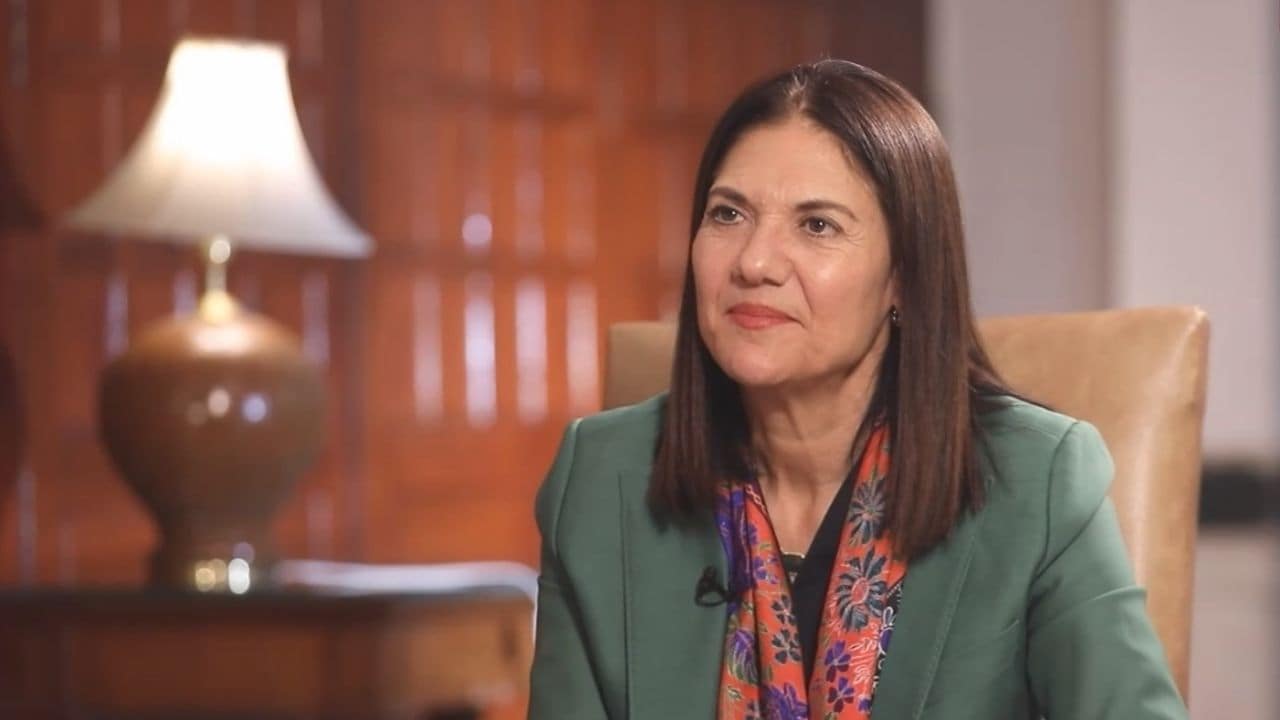
Women’s World Banking, a 45-year-old organisation focused on advancing financial inclusion for women, has seen transformative changes due to the growth of digital financial services, especially in India. Iskenderian emphasised how smartphones and digital payment systems have significantly impacted financial access for women. Through strategic investments, the organisation supports inclusive finance and fintech solutions that foster economic independence for women.
One notable success is an affordable housing finance company in India, which requires women’s names on property titles, granting them asset ownership and reducing vulnerability to domestic violence. These efforts promote gender parity in financial access and economic participation.
Edited excerpts:
Q: Let’s start by talking a little bit about the history of the organisation that you lead today. It’s a 45-year-old organisation, started in 1979, and it has gone from strength to strength. While there’s still a long distance to cover in making access to finance a reality for women, particularly, what have been the big surprises? What have been the big wins so far for you?
Iskenderian: India is very, very near and dear to that 45-year history. One of our founders and the first chair of our board of directors was Ela Bhatt—a legendary champion of women’s economic independence.
I think probably the single biggest exciting change and surprise is really what has happened with digital financial services and the speed with which they have taken off. I would say digital financial services and financial inclusion were probably one of the few silver linings, if you will, of the pandemic. You saw an uptake in smartphone ownership, particularly here in South Asia. There was a real shift in women’s access to technology and women’s ownership of technology, and that has made all the difference. You can lower the cost of delivering financial services even to the last mile—taking small deposits and making relatively small loans—the cost of that becomes really doable with digital financial services. When you combine that with the phenomenal digital public infrastructure that India has put in place, including Aadhaar ID, Jan Dhan accounts, and National Payment Systems, you’re poised for tremendous growth. You were talking about gender parity, and we have seen gender parity in account access here in India for the first time, which is very exciting.
Q: You talked about the pandemic, and what we saw throughout the pandemic was that the burden of what happened—whether it was the pressures that women had to deal with in managing both home and work at the same time, which, of course, is something we have always had to do—was felt much more acutely during the pandemic, along with the setbacks we faced in that regard. Are we past that? Have we made up for lost time since the pandemic?
Iskenderian: This is such an important issue. Women around the world bear the burden of care. But I think the pandemic has shone a light on something that, as you said, we knew was there—women in particular knew it was there—but it became so evident to everyone that this burden was falling much more heavily on the shoulders of women. I’m very excited that we have finally started to see a turnaround in women’s labour force participation here in India for the first time. I come from the United States, and we’re still feeling that impact. We’ve had much more remote work made possible in the United States, and that, on the whole, has been quite good for women. However, unfortunately, you’re seeing women’s rate of promotion to higher positions lag a bit because they are taking advantage of those remote work options. So, it’s a bit of a glass-half-full, glass-half-empty situation.
Where I’m very excited is that we’re seeing, across the Global South as well as in some developed countries, more and more women stepping up in an entrepreneurial way, setting up businesses that address issues within the care economy, such as providing childcare and eldercare solutions. You’re also seeing companies providing transport for older people to get them to doctor’s appointments—essentially, all the things that would prevent a woman from being able to do a full day’s work away from home. So, some very exciting developments.
Q: But talking about entrepreneurial solutions here in India specifically, and I know that you’ve raised two funds and possibly there is a third in the offing. But what are you doing with that money? How are you deploying that capital? What kinds of businesses and entrepreneurial ideas do you want to back with the money you raise?
Iskenderian: The two funds that we have raised have been very much focused on inclusive finance institutions. To even secure money to raise a first fund is such a herculean task.
Q: How hard was it to do that?
Iskenderian: It was the hardest money I have ever raised in my life. We were known as a microfinance organisation, and that was what people were willing to back us to do. We made 10 investments, really very much in the microfinance space.
The second fund, I think, is the more interesting because there are a range of different models. We’ve made 11 investments to date, all of them in the digital space. Some of them are very explicitly fintech solutions. We’ve had some insurtech solutions as well as credit and savings, but we’ve also been looking at other kinds of financial products and services. One of my favourite companies in the portfolio is here in India. It’s an affordable housing finance company that requires the woman’s name to be on the title to the property being financed. In one fell swoop, you are giving her asset ownership, which is an empowering step forward that nothing else equals. We have seen women’s vulnerability to violence in the home decline when she has that asset ownership. We see her ability to raise other capital when she has that asset to pledge. So, we’re very excited about some of the entrepreneurial approaches to women’s empowerment.
Q: I want to focus specifically on what you’re doing with fintechs in the context of the kind of change that we’ve seen happen here in India, specifically. What’s most exciting on that front? I mean, we’ve gone through this big UPI moment, which has changed the course of transactions. Micro transactions have made so much more possible today. What’s been the most exciting aspect of that? And if there is a third fund, is it largely going to be deployed to back and fund fintechs?
Q: I want to focus specifically on what you’re doing with fintechs in the context of the kind of change that we’ve seen happen here in India, specifically. What’s most exciting on that front? I mean, we’ve gone through this big UPI moment, which has changed the course of transactions. Microtransactions have made so much more possible today. What’s been the most exciting aspect of that? And if there is a third fund, is it largely going to be deployed to back and fund fintechs?
Iskenderian: We’re hoping to expand a little bit beyond just the financial sector. Certainly, the fintech space will be front and centre in what we’re trying to do, but we’re going to take a slightly wider look at what the elements are that are holding back women’s economic independence and participation. Looking at the future of work and some of the care economy solutions that I mentioned, we’d like to put some capital behind those as well.
On the UPI specifically, we were so honoured to be able to work with the National Payments Corporation of India on a really interesting piece of work. Despite the huge progress made in universal payments, we still have 200 million women in India who own a smartphone but are not using the universal payment system. We were really interested in looking at why that was and what some of the solutions would be to get them comfortable moving from cash to digital and truly joining this tremendous development in the financial system.
Q: When we talk about unlocking the power, so to speak, of financial inclusion and the gains we’ve benefited from over the past four decades, as you look into the future today, given what we’ve been able to go through, what do you believe we need to prioritise today?
Iskenderian: I would say it’s that gender intentionality—it’s that focus on what you need to incorporate into the development of a solution to serve women’s needs. One thing that we’ve seen here in India, and actually in some of the other countries we’re working in, is that the outreach channel through which the woman is reached can play an enormous role in building her trust, in ensuring that the product addresses some of her concerns. You were asking, what’s going to get those 200 million women off the fence? We’ve spent a lot of time in the last few years training women business correspondents, this concept of the BC Sakhi, who comes from the community. She’s a peer to her clients, and there’s a trust that’s built right from the start, which can help move that woman along the journey to becoming a financial institution client much faster.
Watch the video for more



